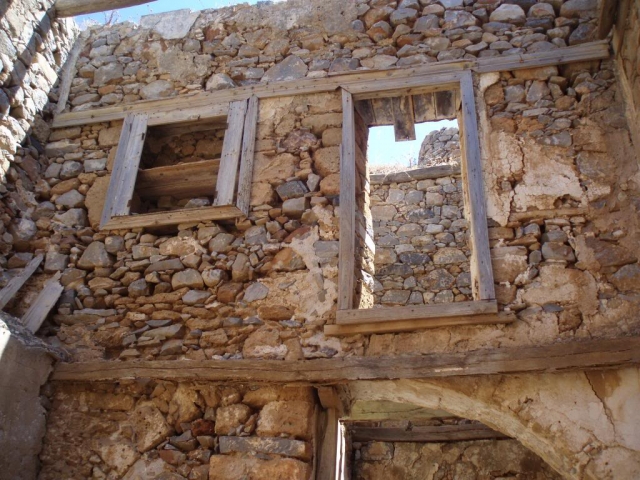Photo: peri-sk-opio.blogspot.com
The islet with the Latin name Spinalonga is preparing to be given the status of a monument in UNESCO’s world cultural heritage list. A working group of experts is preparing the application folder.
The main part of the plan is to protect the natural environment and cultural heritage not only of the islet, but of the surrounding area too. For this purpose, it is necessary to highlight the significance of specific cultural sites, the preservation of material and spiritual heritage and the concurrent development of the local community.
Spinalonga became a sensation after the television broadcast of the dramatic Greek series "The Island," which has been the most circulated so far. The film is about the last inhabitants of the islet, which is located in the Mirabelo Bay in southern Crete. These were Cretans suffering from leprosy, sent to live there in order to protect the rest of the people from the disease which at the time was incurable.
The series is based on the book by British writer Victoria Hislop. In an interview with GRReporter, she described the strange feeling that gripped her when she first visited Spinalonga in 2001. She learned the history of the islet, which inspired her, from travel guides. Then, she decided to write a story that captured the Greek audience and revived the interest in the forgotten islet.

Its ancient name is Kalidon but the Venetians, who had conquered it and built a fortress on it, changed its name because of its shape to Spinalonga, which means a long spine. Turks conquered the islet in 1715 and Muslims settled there. Since 1903, the Greek government began using it as a colony of lepers, sending 251 sick Cretans, who were anyway separated from their villages. Conditions were very difficult, because no medicine for the highly contagious and incurable disease had yet been discovered at that time.
After 1913, other sick people from all over Greece were sent to the islet and the population reached one thousand people. At first, their life was very bad. The islet was a large den, a cemetery for the living dead. There was no organization, no medicines for the sick, there was no hope. However, the people organized themselves and established a society with its own rules and values. They began to marry despite the ban and to have babies, some of whom were completely healthy. They sent them for adoption by childless families in Crete. With a small social payment, the patients were able to buy supplies from the small port market where farmers from Crete were selling their products against specially disinfected banknotes.
The hospital on Spinalonga closed permanently in 1957 and the patients moved to the infectious hospital in the Athens district of Saint Barbara. Anyway, their number had dramatically dropped after the discovery of a medicine against leprosy in the US 10 years earlier. Since then, no one has been living on Spinalonga but the deserted buildings and the atmosphere take visitors back in time.
The islet is an archaeological site and since the beginning of June, the famous painter Kostas Tsoklis has turned it into a work of art. During the summer months, Spinalonga is visited by 1200-1500 tourists daily. The islet is the second archaeological site on Crete in terms of number of visits after Knossos palace.
It is worth noting that this year's list of monuments protected by UNESCO composed a few days ago does not contain a Greek site.